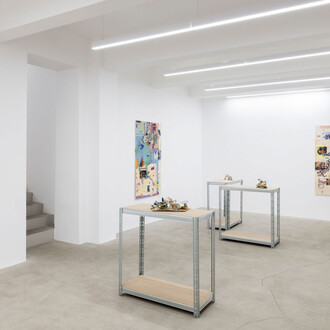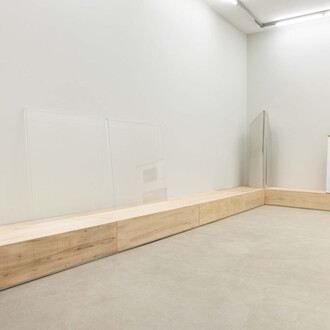Fondazione Prada presents the exhibition “Machines à penser”, curated by Dieter Roelstraete, exploring the correlation between conditions of exile, escape and retreat and physical or mental places which favor reflection, thought and intellectual production.
“Machines à penser” focuses on three major philosophers of the 20th century: Theodor W. Adorno (1903-1969), Martin Heidegger (1889-1976) and Ludwig Wittgenstein (1889-1951). The latter two shared a life-long need for intellectual isolation: Heidegger spent long periods of his life in a secluded hut in the village of Todtnauberg in the Black Forest in Germany, whilst Wittgenstein retreated on several occasions to a small mountain cabin situated in a fjord in Skjolden, Norway. Adorno, on the other hand, was forced into exile from his native Germany during by the Nazi regime, first to Oxford and then to Los Angeles, where he wrote Minima Moralia, a collection of aphorisms that also reflects on the fate of forced emigration. These reflections inspired the installation conceived by the Scottish artist and poet Ian Hamilton Finlay in 1987 titled Adorno’s Hut, a centerpiece of the exhibition alongside architectural reconstructions of the actual huts of Heidegger and Wittgenstein.
As Dieter Roelstraete explains: “these were the places where our protagonists hatched out their deepest thoughts. Isolation, whether chosen or imposed, appears to have inspired them decisively—and over the years their huts have proven to be an inexhaustible source of inspiration in turn for generations of artists, attracted to the fantasy of withdrawal as articulated in its most elemental architectural form.” The exhibition takes place on the ground floor and on the first floor of the 18th century palazzo, creating an immersive journey that deepens our understanding of these three philosophers and the relationship between philosophy, art and architecture.
Adorno is the protagonist of the first part of the exhibit, in which his American exile is recalled through a large-scale reproduction of a photograph by Patrick Lakey showcasing the interior of Villa Aurora in Los Angeles. The fate of forced retreat is explored through the work of artists such as Susan Philipsz; Ewan Telford; Patrick Lakey; Anselm Kiefer; and Alexander Kluge, who conceived a new video for the exhibition. On the first floor of Ca’ Corner della Regina Martin Heidegger’s Black Forest cabin is evoked through a remake that contains, among other works, a series of personal photographs by the photo-journalist Digne Meller-Marcovicz and a set of ceramic pieces by Jan Bontjes van Beek. Contemporary work by artists such as Giulio Paolini, Sophie Nys, Iñigo Manglano-Ovalle and Paolo Chiasera chart the long shadow cast by Heidegger’s thought across philosophies of building, dwelling and belonging.
Inside the reconstruction of Ludwig Wittgenstein’s small house in Skjolden, Norway, the viewer encounters Head of a Girl (1925-1928), the only artwork known to have been made by the Austro-British philosopher, shown here alongside his personal belongings. Wittgenstein’s self-imposed exile and lifelong quest for philosophical peace of mind form the subject of artworks created by a Norwegian artist collective comprised of Sebastian Makonnen Kjølaas, Marianne Bredesen and Siri Hjorth; Jeremy Millar; and Guy Moreton. A newly commissioned work by Leonor Antunes and a sculpture by Mark Manders are also featured in the exhibition. Goshka Macuga designed three sculptures for the exhibition depicting the heads of the three philosophers, Mark Riley presents three dioramas and Gerhard Richter exhibits overpainted photographs of Engadin mountainscapes and sculpture Kugel III, evoking Friedrich Nietzsche’s thinking quarters in Sils-Maria where Thus Spoke Zarathustra was conceived.
The exhibition also includes a historical section focusing on Church father Saint Jerome (347-419), famous for leading the life of an anchorite in the Syrian desert while translating the Bible into Latin. Renaissance paintings and prints dedicated to the iconography of the saint are exhibited alongside a Renaissance studiolo containing, among other items, first editions of Heidegger and Wittgenstein’s writings, its outer walls clad in a site-specific installation by the Scottish artist-poet Alec Finlay titled Hutopia (2018).
















